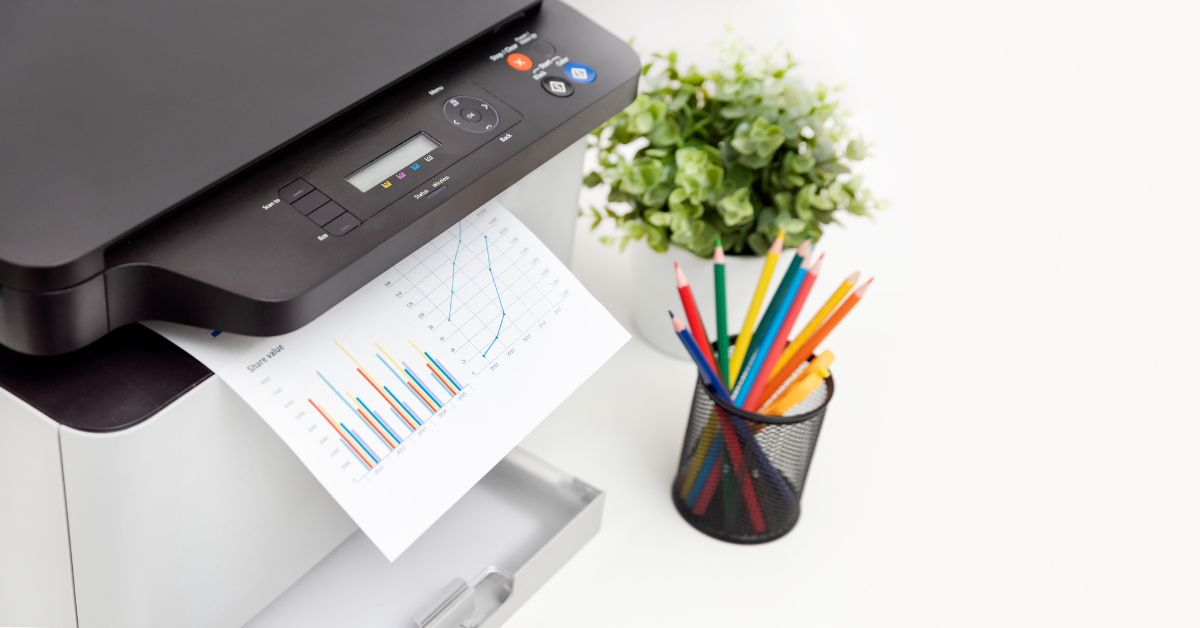Since the COVID-19 pandemic, remote work has become hugely popular for businesses in Ontario and across the world. In fact, in March 2021 around five million Canadian employees were working remotely - accounting for over 30 percent of the Canadian workforce.
That’s according to a report from Statista, which found this figure was significantly higher than 2016, when only four percent of people were working mostly remotely within Canada.
When it comes to ensuring your remote team is successful, nothing is more important than implementing the right remote workforce technology. Technology ensures that remote workers are productive, can collaborate with team members, complete their work and manage projects.
While technologies like desktops, laptops and communication software are the big ticket items discussed most frequently, there are other technologies that are just as crucial for some remote employees.
While the vast majority of remote employees for your business won’t need a printer, for the few employees who work in document-heavy roles it’s important that you provide them with the right technology. The right home office printer will save your business money and ensure your remote employees that use them are productive.
That’s why, in this blog, we’re going to look at the top five things to keep in mind when selecting a home office printer for your remote employees.
#1 - Decide between inkjet versus laser printersThe choice between inkjet vs laser printers often comes down to how much, and what, your employees need to print. While inkjet printers use cartridges of ink that are applied wet to paper and rapidly dry, laser printers use toner - a type of ink dust that bonds to paper.
Colour inkjet printers comprise the bulk of the market as they have versatile printing options and are typically affordable, while colour laser printers generally have a higher cost per page than colour inkjet options.
Laser printers tend to have higher page yields, with long-lasting toner cartridges that can be used anywhere from 3,000 to 20,000 pages. Inkjet cartridges typically last for up to 2,000 to 2,500 pages, but this all depends on the type of cartridges and printer you choose. Inkjets are typically more affordable if you print less, while laser printers can offer a more cost-effective option if your remote employees have to print a large number of documents.
#2 - Will your remote employees need a multifunction printer?Depending on the role of the employee that you are choosing a printer for, it’s possible that they may need a multifunction printer for their home office. These printers will not only print documents, they also scan, copy and save physical documents as files on their computer.
These features can be incredibly useful for remote teams, as it allows employees to minimize the paperwork they keep at home, and instead save those documents into PDFs that can be virtually distributed across the organization where required. This improves how your remote team can save and access documents when working from home.
If your remote employees don’t need comprehensive capabilities, there’s a new type of printer that has risen in popularity in recent years due to its low profile for home use. Compact and portable desk printers can be a great option that don’t take up much space in your employees’ home and can do the odd job here and there when required.
#3 - What is the price per page of the printer you’re choosing?When purchasing a home office printer for your remote employees, it may feel like the biggest expense is the cost of the printer. In most cases, however, this typically isn't true. Understanding price per page will give you a much more accurate idea of how much a printer will cost your business over the long term.
You can calculate the cost per page by dividing the price of an ink cartridge by the cartridges page yield (a figure published by most printer manufacturers), or the number of pages you expect to get out of each cartridge.
Figuring out price per page will give you an accurate estimate of how much a printer will cost your business over its lifetime. This should help you narrow down which printers fall into your budget restrictions.
#4 - Make sure the printer is compatible with your employee’s deviceThis may sound obvious, but it’s crucial that whatever printer you choose is compatible with your remote worker’s devices. Most printers will be able to connect with the most popular devices, such as Mac, Microsoft, Linux and Chromebooks.
In addition, you’ll want to consider how that printer will connect to the employee’s device. Nearly every printing device offers multiple connectivity options, with WiFi and cloud printing connectivity are standard for most printers. If the printer connects wirelessly via bluetooth, make sure the printer is comparative with Apple AirPrint if your employee uses a Mac software or Chrome OS-compatible if they are using a Chromebook.
#5 - Where should you purchase, or lease, the printer?Printers are available universally in physical and online stores that sell computer equipment, including some of the common chains you’ll find in any town or city. They can also be purchased or leased directly from the manufacturer.
Another option, however, is to work with an IT consultant who can help advise you on the best home office printer based on your company, or employees’, specific requirements. IT providers often sell and lease both new and refurbished printers - giving you a range of options that fit all budgets and needs.
Interested in learning about how OT Group can help your business find the perfect home office printer? Get in touch with our team of office technology experts today. We would love to help.





.png)
